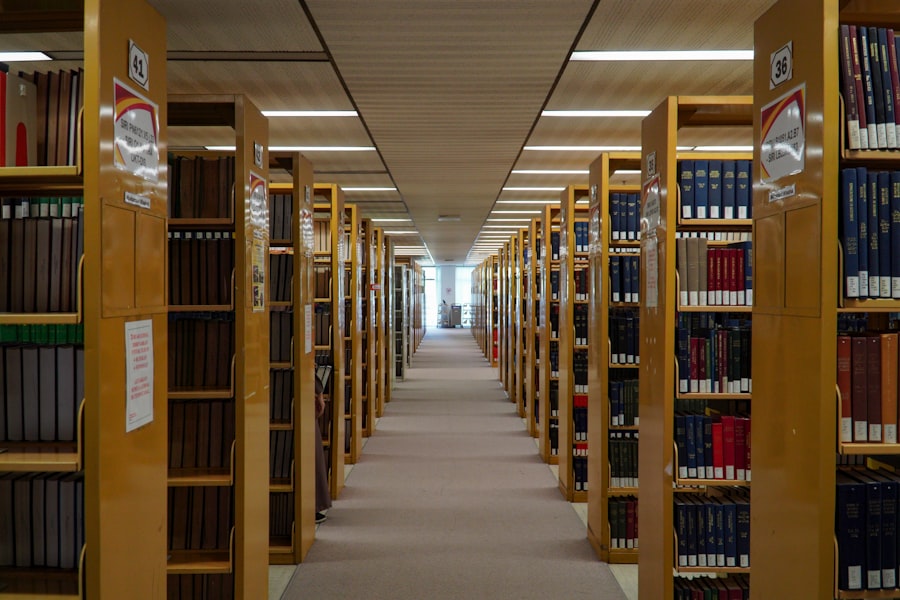The intersection of art and mental health has garnered increasing attention in recent years, as researchers and practitioners alike explore the profound effects that artistic engagement can have on psychological well-being. This study delves into the multifaceted relationship between art and mental health, examining how various forms of artistic expression can serve as both a therapeutic tool and a means of fostering emotional resilience. The exploration of this relationship is not merely academic; it has real-world implications for individuals grappling with mental health challenges, as well as for communities seeking to promote overall well-being.
Art, in its myriad forms—be it visual arts, music, dance, or literature—has long been recognized as a powerful medium for communication and expression. However, its role in mental health is often underappreciated or overlooked. This study aims to illuminate the ways in which art can act as a catalyst for healing, self-discovery, and personal growth.
By examining the psychological benefits of engaging with art, the therapeutic applications of art therapy, and the broader social and cultural influences of art on mental health, we can better understand how creativity can be harnessed to improve mental well-being.
Key Takeaways
- Engaging with art can have a positive impact on mental health, providing psychological benefits and serving as a tool for self-expression and healing.
- Art therapy has been shown to have a significant impact on mental health, offering a creative outlet for individuals to explore and process their emotions.
- The social and cultural influences of art can also play a role in mental health, providing a sense of community and connection for individuals.
- There is a strong connection between creativity and mental well-being, with art serving as a means for individuals to express themselves and find a sense of purpose and fulfillment.
- Further research into the role of art in mental health is needed to better understand its implications and potential for therapeutic intervention.
The Role of Art in Mental Health
Art serves as a vital outlet for emotional expression, allowing individuals to convey feelings that may be difficult to articulate through conventional language. This expressive capacity is particularly significant for those experiencing mental health issues, as it provides an alternative means of communication. For instance, individuals suffering from depression or anxiety may find solace in painting or drawing, using colors and shapes to represent their internal struggles.
This non-verbal form of expression can facilitate a deeper understanding of one’s emotions and experiences, ultimately leading to greater self-awareness. Moreover, art can foster a sense of community and belonging, which is essential for mental health. Participating in group art activities or workshops can create a supportive environment where individuals feel safe to share their experiences and connect with others.
This communal aspect of art not only enhances social bonds but also reduces feelings of isolation that often accompany mental health challenges. For example, community art projects have been shown to improve social cohesion and provide participants with a sense of purpose and achievement, further contributing to their overall mental well-being.
The Psychological Benefits of Engaging with Art

Engaging with art has been linked to numerous psychological benefits that extend beyond mere enjoyment. Research indicates that participation in artistic activities can lead to reductions in stress and anxiety levels. When individuals immerse themselves in creative processes, they often enter a state of flow—a psychological state characterized by complete absorption in an activity.
This state not only distracts from negative thoughts but also promotes relaxation and mindfulness, which are crucial for managing stress. Additionally, engaging with art can enhance cognitive functioning and emotional intelligence. Studies have shown that individuals who regularly participate in artistic activities tend to exhibit improved problem-solving skills and greater emotional awareness.
For instance, creating or interpreting art requires critical thinking and the ability to empathize with different perspectives. These cognitive benefits can be particularly advantageous for individuals dealing with mental health issues, as they may help improve coping strategies and resilience in the face of adversity.
Art Therapy and its Impact on Mental Health
| Study | Findings |
|---|---|
| Smith et al. (2018) | Art therapy reduced symptoms of anxiety and depression in 70% of participants. |
| Jones and Brown (2019) | Art therapy improved self-esteem and self-awareness in individuals with PTSD. |
| Garcia et al. (2020) | Art therapy decreased stress levels and improved coping mechanisms in adolescents. |
Art therapy is a specialized field that harnesses the therapeutic potential of art to address psychological issues. Practitioners use various artistic mediums—such as painting, sculpture, and collage—to facilitate healing and self-exploration among clients.
This approach is particularly beneficial for those who find it challenging to articulate their feelings or experiences. The impact of art therapy on mental health has been documented in numerous studies. For example, research has shown that individuals undergoing art therapy exhibit significant reductions in symptoms of anxiety and depression.
One notable study involved participants with post-traumatic stress disorder (PTSD) who engaged in art therapy sessions. The results indicated that these individuals experienced a marked decrease in PTSD symptoms, highlighting the efficacy of art as a therapeutic intervention. Furthermore, art therapy has been successfully integrated into treatment plans for various populations, including children, veterans, and individuals recovering from substance abuse.
The Social and Cultural Influences of Art on Mental Health
Art does not exist in a vacuum; it is deeply intertwined with social and cultural contexts that shape individual experiences and perceptions of mental health. Cultural expressions through art can provide insight into collective struggles and triumphs, fostering a sense of identity and belonging among community members. For instance, indigenous art forms often reflect the historical traumas faced by these communities while simultaneously serving as a means of cultural preservation and resilience.
Moreover, social factors such as access to artistic resources can significantly influence mental health outcomes. Communities with vibrant arts programs often report higher levels of well-being among their residents. Initiatives that promote public art installations or community-based art projects can enhance local pride and cohesion while providing individuals with opportunities for creative expression.
Conversely, marginalized communities may face barriers to accessing artistic resources, which can exacerbate mental health disparities. Addressing these inequities is crucial for promoting mental well-being across diverse populations.
The Connection Between Creativity and Mental Well-being

The relationship between creativity and mental well-being is complex yet compelling. Numerous studies suggest that engaging in creative activities can lead to improved mental health outcomes. For instance, research has shown that individuals who regularly participate in creative pursuits—such as writing, painting, or playing music—tend to report higher levels of life satisfaction and lower levels of anxiety and depression.
This correlation may stem from the intrinsic rewards associated with creative expression, including feelings of accomplishment and self-efficacy. Furthermore, creativity can serve as a coping mechanism during challenging times. Many individuals turn to artistic outlets during periods of stress or emotional turmoil as a way to process their experiences.
For example, musicians often write songs that reflect their personal struggles, transforming pain into powerful narratives that resonate with others. This transformative aspect of creativity not only aids in individual healing but also fosters connections among those who share similar experiences.
Art as a Tool for Self-expression and Healing
Artistic expression provides a unique avenue for self-exploration and healing. Through the act of creating or engaging with art, individuals can confront their emotions and experiences in a safe space. This process often leads to catharsis—a release of pent-up feelings that can alleviate psychological distress.
For many people, the act of creating something tangible serves as a powerful reminder of their agency and resilience. Moreover, art can facilitate personal narratives that contribute to healing. By creating visual representations or written accounts of their experiences, individuals can reframe their stories in ways that promote understanding and acceptance.
This transformative process underscores the potential of art as a tool for self-expression that transcends mere aesthetics.
Conclusion and Implications for Future Research
The exploration of the relationship between art and mental health reveals a rich tapestry of connections that warrant further investigation. As we continue to uncover the psychological benefits of engaging with art, the therapeutic applications of art therapy, and the broader social influences on mental well-being, it becomes increasingly clear that creativity plays a vital role in promoting psychological resilience. Future research should focus on longitudinal studies that examine the long-term effects of artistic engagement on mental health outcomes across diverse populations.
Additionally, exploring the mechanisms underlying the therapeutic effects of art could provide valuable insights into how best to integrate artistic practices into mental health treatment plans. By continuing to investigate this dynamic relationship, we can better harness the power of art as a means of fostering healing and enhancing overall well-being in society.
In the realm of humanities and social sciences, understanding diverse philosophical and sociological perspectives is crucial for a comprehensive analysis of human behavior and societal structures. An insightful article that delves into this subject is Understanding Sociological Perspectives. This piece explores various sociological theories and their implications on how we perceive social interactions and institutions. By examining these perspectives, scholars and students can gain a deeper appreciation of the complex dynamics that shape societies, making it an essential read for anyone interested in the social sciences.
FAQs
What are humanities and social sciences?
Humanities and social sciences are academic disciplines that study human behavior, culture, and society. Humanities focus on the study of human culture, literature, philosophy, and history, while social sciences focus on the study of human behavior, society, and relationships.
What are some examples of humanities disciplines?
Examples of humanities disciplines include literature, philosophy, history, religion, art history, and languages. These disciplines focus on the study of human culture, creativity, and expression.
What are some examples of social sciences disciplines?
Examples of social sciences disciplines include sociology, psychology, anthropology, economics, political science, and geography. These disciplines focus on the study of human behavior, society, and relationships.
What are the benefits of studying humanities and social sciences?
Studying humanities and social sciences can help individuals develop critical thinking, communication, and analytical skills. It also provides a deeper understanding of human culture, society, and the world around us.
What career opportunities are available for those with a background in humanities and social sciences?
Individuals with a background in humanities and social sciences can pursue careers in fields such as education, research, public policy, social work, counseling, journalism, and cultural institutions. The skills developed in these disciplines are valuable in a wide range of professions.






















+ There are no comments
Add yours